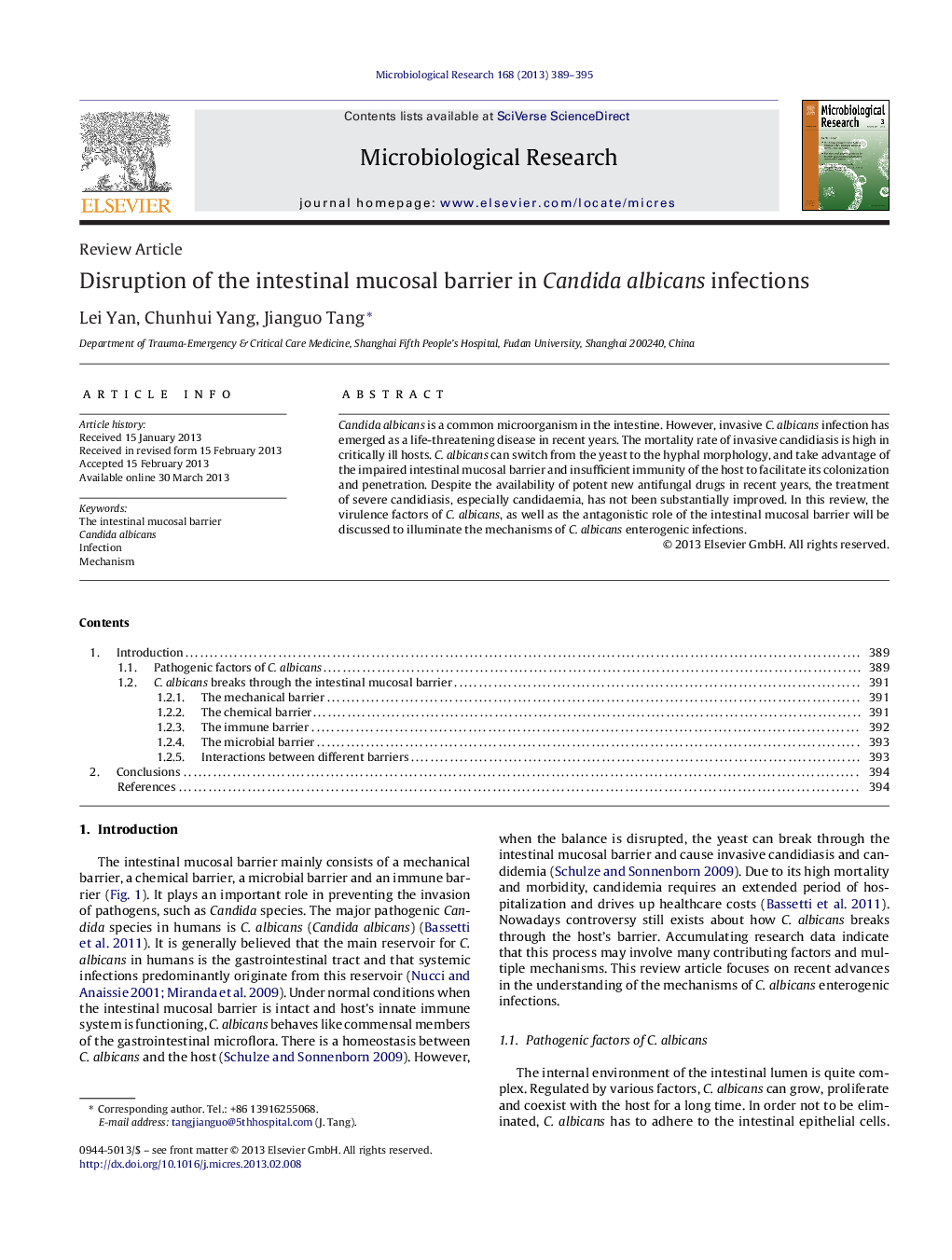| Article ID | Journal | Published Year | Pages | File Type |
|---|---|---|---|---|
| 10891191 | Microbiological Research | 2013 | 7 Pages |
Abstract
Candida albicans is a common microorganism in the intestine. However, invasive C. albicans infection has emerged as a life-threatening disease in recent years. The mortality rate of invasive candidiasis is high in critically ill hosts. C. albicans can switch from the yeast to the hyphal morphology, and take advantage of the impaired intestinal mucosal barrier and insufficient immunity of the host to facilitate its colonization and penetration. Despite the availability of potent new antifungal drugs in recent years, the treatment of severe candidiasis, especially candidaemia, has not been substantially improved. In this review, the virulence factors of C. albicans, as well as the antagonistic role of the intestinal mucosal barrier will be discussed to illuminate the mechanisms of C. albicans enterogenic infections.
Keywords
Related Topics
Life Sciences
Biochemistry, Genetics and Molecular Biology
Biotechnology
Authors
Lei Yan, Chunhui Yang, Jianguo Tang,
